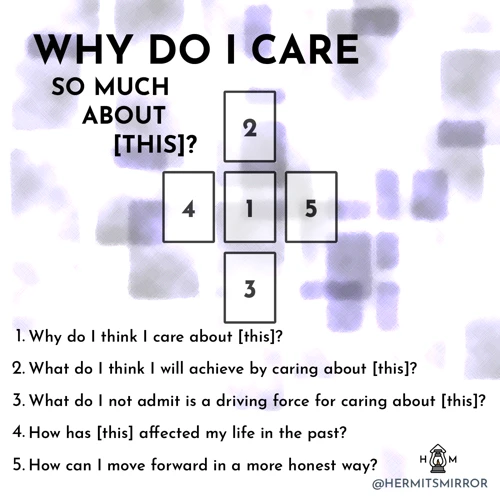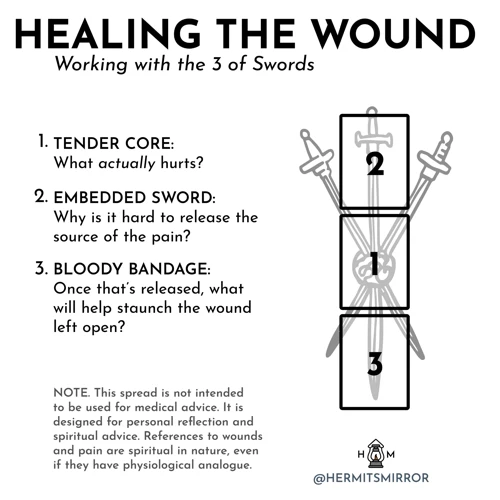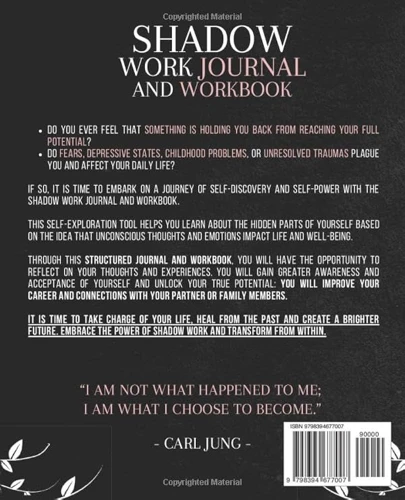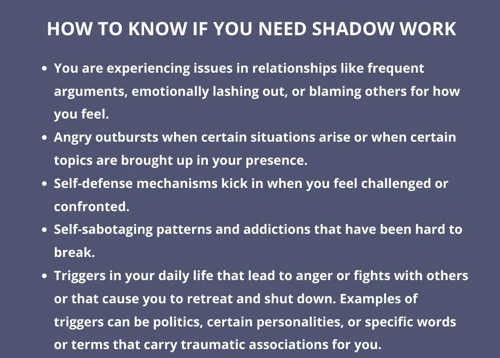The journey of self-discovery is often accompanied by the need to explore the depths of our subconscious, unearthing hidden emotions, patterns, and beliefs. This is where shadow work comes into play, a practice that involves diving deep into the shadows of our psyche to uncover and heal the aspects of ourselves that we have kept hidden. Tarot, with its mystical and intuitive nature, can serve as a powerful tool in this process. By tapping into the subconscious mind and providing insights into our innermost thoughts and emotions, tarot opens a gateway to self-reflection and personal growth. In this article, we will explore the role of self-reflection in shadow work, and how tarot can be used as a guide on this transformative journey.
Contents
- Understanding Shadow Work
- How Tarot Can Assist in Shadow Work
- The Role of Self-Reflection in Shadow Work
- Using Tarot for Self-Reflection in Shadow Work
- Practical Tips for Self-Reflective Shadow Work
- Integration and Healing
- Conclusion
-
Frequently Asked Questions
- What is shadow work?
- Why is self-reflection important in shadow work?
- How can tarot assist in shadow work?
- What is the role of self-awareness in shadow work?
- How do I choose the right tarot spread for self-reflection?
- What can I expect from using tarot for self-reflection in shadow work?
- Why journaling is beneficial in self-reflective shadow work?
- How can I find support during my self-reflective shadow work?
- How does shadow work contribute to personal healing?
- What is the significance of integrating shadows in shadow work?
- References
Understanding Shadow Work

Shadow work refers to the process of delving into our subconscious and examining the hidden aspects of our psyche. It involves acknowledging and working with the “shadow self,” the parts of ourselves that we have pushed aside or repressed due to societal conditioning or personal experiences. The shadow self encompasses our fears, insecurities, unresolved traumas, and negative patterns or beliefs that affect our thoughts, emotions, and actions. By bringing these aspects to light, we can begin to reclaim our power and integrate them into our conscious awareness, leading to personal growth and healing. To embark on the journey of shadow work, it is essential to explore the depths of the shadow self and confront the uncomfortable or challenging parts of our being. This can be done through self-reflection, therapy, journaling, or utilizing spiritual tools such as tarot. By using tarot as a guide, we can gain insights into our subconscious, identify hidden patterns and triggers, and begin the process of integrating our shadows into our conscious selves. To learn more about how tarot can assist in shadow work, you can read our article on Exploring Shadow Work with Tarot.
Exploring the Shadow Self
Exploring the shadow self is a vital aspect of shadow work. It involves delving deep into the subconscious to uncover the parts of ourselves that have been repressed, ignored, or denied. The shadow self consists of the aspects we deem unacceptable, such as our fears, insecurities, and unresolved traumas. This exploration requires courageous self-reflection and a willingness to face the discomfort that may arise. By shining a light on these hidden aspects, we bring them into conscious awareness, allowing us to understand how they have influenced our thoughts, behaviors, and relationships. This process can be facilitated by tools such as tarot, which provide symbolic interpretations and insights into our shadows. Through tarot readings, we can uncover the deep-seated beliefs and patterns that have shaped our shadow self. These revelations serve as a stepping stone towards self-acceptance and integration. To learn more about the role of tarot in identifying and confronting shadows, you can refer to our article on Identifying and Confronting Shadows with Tarot. Shadow integration is a gradual and transformative process that allows us to reclaim lost parts of ourselves, leading us on a path of self-discovery, healing, and growth.
Benefits of Shadow Work
Shadow work offers numerous benefits that contribute to personal growth and self-empowerment. By exploring and confronting our shadow selves, we gain a deeper understanding of our inner landscape and develop a greater capacity for self-acceptance and self-compassion. Through shadow work, we can uncover the roots of our fears, insecurities, and negative patterns, empowering us to break free from their hold on our lives. This process allows us to cultivate a sense of authenticity and alignment with our true selves, leading to improved self-esteem and a stronger sense of identity. Additionally, shadow work helps us develop emotional resilience and the ability to navigate challenging situations with greater ease and awareness. By integrating our shadows, we can experience profound healing and transformation, creating space for personal growth, inner peace, and a greater sense of wholeness. To learn more about the integration process in shadow work with tarot, you can read our article on Tarot Shadow Integration.
How Tarot Can Assist in Shadow Work

Tarot, with its rich symbolism and intuitive nature, can serve as a valuable tool in the practice of shadow work. It acts as a bridge between the conscious and subconscious mind, allowing us to connect with our deepest thoughts, emotions, and beliefs. Through tarot, we can tap into the wisdom of our subconscious, uncovering hidden patterns and truths that may be influencing our lives. The cards provide a mirror that reflects our internal landscape, offering insights and guidance on the aspects of ourselves that we need to address and integrate. Tarot can help us identify our shadows, the parts of ourselves that we may have pushed aside or denied, and bring them into conscious awareness for healing and transformation. By engaging in tarot readings, we can explore the depths of our psyche and gain a deeper understanding of ourselves, ultimately aiding us in the process of shadow integration. To learn more about connecting with the subconscious mind through tarot, you can read our article on Tarot and Shadow Integration.
Connecting with the Subconscious Mind
Connecting with the subconscious mind is a fundamental aspect of shadow work, and tarot serves as a powerful tool in facilitating this connection. The subconscious mind holds a wealth of information, including buried emotions, memories, and beliefs that influence our thoughts and behaviors. Through the symbolism and intuition of tarot, we can tap into this realm and gain insights that may not be immediately accessible to our conscious awareness. When we engage with tarot cards, we enter a state of focused attention and openness, allowing our subconscious to communicate with us more freely. The imagery and archetypes depicted in the cards resonate with our subconscious, triggering intuitive responses and reflections. This connection not only reveals the underlying aspects of our shadows but also allows for a deeper understanding of ourselves. By bridging the gap between the conscious and subconscious minds, tarot helps us uncover hidden layers of our psyche, offering valuable guidance and self-reflection. Working with tarot in shadow work encourages us to trust our intuition and explore the depths of our subconscious for transformational growth.
Uncovering hidden patterns and beliefs is a pivotal aspect of shadow work that can greatly contribute to personal growth and transformation. Through the use of tarot, we can gain valuable insights into the subconscious mind and shine a light on the underlying patterns and beliefs that may be influencing our thoughts, behaviors, and emotions. Tarot cards act as a mirror, reflecting back to us the intricate tapestry of our psyche. By examining the symbolism and messages within the cards, we can uncover the deep-rooted patterns that have been operating in our lives, often on a subconscious level. These patterns can encompass various aspects such as relationship dynamics, self-sabotaging behaviors, or limiting beliefs about ourselves and the world around us. The tarot invites us to explore these patterns and beliefs, to question their origins, and to challenge their validity. By bringing these hidden aspects to our conscious awareness, we empower ourselves to make conscious choices and take steps towards positive change. It is important to approach this process with self-compassion and non-judgment, recognizing that uncovering hidden patterns and beliefs is a transformative journey that requires patience and understanding. Through tarot’s guidance, we can gain clarity, deepen our self-awareness, and cultivate the strength to release and heal the patterns that no longer serve us.
The Role of Self-Reflection in Shadow Work

Self-reflection plays a pivotal role in shadow work, as it is through introspection and self-awareness that we can truly understand and transform our hidden shadows. By engaging in self-reflection, we create a space to examine our thoughts, emotions, and behaviors with honesty and compassion. This process allows us to identify recurring patterns, triggers, and shadows that may be influencing our lives. Self-reflection also enables us to develop a deeper understanding of ourselves, our values, and our personal growth goals. It involves asking ourselves probing questions, journaling, and exploring the various layers of our being. Through self-reflection, we can uncover the root causes of our shadows and gain clarity on the aspects of ourselves that need healing. During the process of shadow work, self-reflection acts as a guiding light, helping us navigate the depths of our subconscious and paving the way for profound transformation and integration.
Developing Self-Awareness
Developing self-awareness is a crucial aspect of shadow work and personal growth. It involves consciously examining our thoughts, feelings, beliefs, and behaviors to gain a deeper understanding of ourselves. Self-awareness helps us to become more attuned to our inner world and allows us to recognize patterns and triggers that may be influencing our lives. When it comes to shadow work, self-awareness is key because it helps us identify the aspects of our shadow self that need healing and integration. By shining a light on our shadows, we can better understand how they manifest in our lives and how they may be holding us back from reaching our full potential. Through self-reflection and introspection, we can ask ourselves probing questions about our motivations, fears, and desires. Tarot can be a powerful tool in this process, as the cards act as mirrors, reflecting back to us aspects of ourselves that may be hidden or obscured. By using tarot to explore our inner landscape, we can deepen our self-awareness and gain valuable insights into our shadows. The process of developing self-awareness involves patience, curiosity, and a willingness to face uncomfortable truths. It allows us to take ownership of our thoughts and emotions and empowers us to make conscious choices that align with our authentic selves. Taking time for self-reflection and engaging in practices that promote self-awareness, such as meditation, journaling, or engaging in therapy, can greatly enhance our ability to navigate the intricacies of shadow work.
Examining Personal Triggers and Shadows
Examining personal triggers and shadows is a crucial aspect of self-reflection in shadow work. Triggers are situations, events, or interactions that elicit intense emotional responses within us. They often stem from unresolved wounds and unhealed aspects of our psyche. By identifying and examining our triggers, we can gain valuable insights into our shadow self.
To begin the process of examining personal triggers and shadows, it is important to cultivate self-awareness. This involves paying attention to our emotions, thoughts, and bodily sensations during triggering situations. By becoming aware of our triggers, we can start to unravel the underlying beliefs and patterns that contribute to our reactions.
Once we have identified our triggers, it is essential to ask ourselves probing questions to gain deeper understanding. These questions may include: Why does this particular situation trigger such a strong emotional response? What past experiences or traumas does it remind me of? What core belief or fear is being activated?
Tarot cards can serve as powerful tools to guide this process of self-examination. Each card carries symbolic imagery and archetypal meanings that can help us explore the unconscious aspects of our triggers and shadows. When we draw specific cards related to our triggers, it can provide us with insights and perspectives that we may not have consciously considered.
Through this examination process, we can gain a clearer understanding of our triggers and shadows, allowing us to address and heal the wounds that they represent. It may involve working through limiting beliefs, facing past traumas, or challenging negative patterns and behaviors. By embracing our shadows and integrating them, we can experience deep transformation and growth on our journey of self-discovery and healing.
Using Tarot for Self-Reflection in Shadow Work

Tarot serves as a powerful tool for self-reflection in the realm of shadow work. It provides a unique avenue for exploring our inner selves and gaining profound insights into our subconscious. One way to utilize tarot for self-reflection is by selecting or creating tarot spreads specifically designed to uncover and examine our hidden aspects. These spreads can focus on various themes such as uncovering our fears, exploring past traumas, or identifying limiting beliefs. By laying out the cards and interpreting their meanings in relation to our personal experiences and emotions, we can gain a deeper understanding of our subconscious patterns and triggers. The images and symbols depicted on the tarot cards act as mirrors, reflecting back to us the aspects of ourselves that need attention and healing. Through this introspective process, we can begin to integrate our shadows, develop self-awareness, and embark on a transformative journey of self-discovery and growth.
Choosing the Right Tarot Spread
When it comes to self-reflection in shadow work, choosing the right tarot spread can play a crucial role in gaining deeper insights into our subconscious and illuminating the areas that require our attention. There are various tarot spreads available, each designed to focus on different aspects of our inner selves. It is important to select a tarot spread that resonates with the specific intentions and goals of our shadow work. For example, the Celtic Cross spread offers a comprehensive overview of the current situation while delving into the underlying influences and potential outcomes. This spread can be insightful in identifying the root causes of our shadows and understanding how they impact our lives. On the other hand, the Shadow Work Spread focuses specifically on exploring the hidden aspects of ourselves, shedding light on our fears, unresolved conflicts, and self-sabotaging patterns. This spread can provide guidance on how to integrate these shadows into our conscious awareness and facilitate the healing process. Additionally, there are spreads like the Inner Child Spread or the Ancestral Healing Spread that focus on specific areas of shadow work. Ultimately, the key is to choose a tarot spread that resonates with our own journey of self-reflection and addresses the particular aspects of shadow work we are seeking to explore. By selecting the right tarot spread, we can enhance our self-reflection process and gain valuable insights into our shadows, leading to personal growth and transformation.
Interpreting the Cards for Self-Reflection
Interpreting the cards for self-reflection is a crucial aspect of using tarot for shadow work. Each card in the tarot deck holds symbolism and meaning that can provide valuable insights into our subconscious mind and help us reflect on our inner landscape. Here are some key steps to effectively interpret the cards for self-reflection:
1. Intuitive Connection: Begin by establishing a connection with the cards. Take a moment to relax and center yourself, allowing your intuition to guide you. Trust your instincts as you draw and observe the cards.
2. Visual Analysis: Look closely at the imagery, colors, and symbols present in each card. Pay attention to any elements that catch your eye or evoke emotions within you. The visual cues can offer clues about the message the card holds for your self-reflection.
3. Symbolic Meaning: Familiarize yourself with the traditional meanings of the cards. However, remember that your interpretation may differ based on your personal experiences and intuition. Consider how the symbolism of each card resonates with your current situation or emotions.
4. Card Position: Pay attention to the position of the card within the spread. Different positions may indicate different aspects of your self-reflection. For example, a card in the past position may represent past experiences or influences, while a card in the future position may symbolize potential outcomes or growth.
5. Personal Associations: Reflect on your personal associations with each card. What memories, emotions, or thoughts arise when you see a specific card? These associations can provide valuable insights into your subconscious mind and help you uncover deeper layers of your psyche.
6. Journaling: Write down your interpretations and reflections on each card. Journaling allows you to capture your thoughts, emotions, and observations, providing a record of your self-reflection journey. It also helps you track patterns or recurring themes that emerge across different readings.
Remember, interpreting the cards for self-reflection is a personal and intuitive process. Trust yourself and allow the cards to guide you on your journey of self-discovery and healing.
Practical Tips for Self-Reflective Shadow Work

When engaging in self-reflective shadow work, it is important to create a supportive and nurturing environment for ourselves. One practical tip is to maintain a journal where we can document our thoughts, emotions, and insights that arise during the process. This not only helps us track our progress but also provides a safe space to explore our innermost thoughts. Another helpful tip is to set aside dedicated time for reflection, allowing ourselves to fully dive into the depths of our psyche without distractions. Whether it’s a few minutes each day or longer periods on a weekly basis, this focused time allows us to go deeper into self-inquiry and self-discovery. Lastly, seeking support from a tarot practitioner or therapist can greatly enhance our self-reflective shadow work. Their guidance, skills, and expertise can provide valuable insights, offer different perspectives, and facilitate our healing and integration process. By incorporating these practical tips, we can create a solid foundation for self-reflection and navigate the complexities of shadow work with greater clarity and ease.
Maintaining a Journal
Maintaining a journal is a powerful tool for self-reflection in shadow work. Writing down our thoughts, emotions, and experiences allows us to create a safe space to explore and process our shadow aspects. Here are some key benefits of maintaining a journal in the context of shadow work:
1. Increased Self-Awareness: Journaling provides an opportunity to gain clarity and insight into our thoughts and emotions. By regularly writing about our experiences, we can identify recurring patterns, triggers, and shadows that may be influencing our behavior. This heightened self-awareness is crucial for understanding and transforming our shadow aspects.
2. Personal Reflection: Pouring our thoughts onto paper allows us to examine our experiences from a different perspective. In the process, we can gain new insights, uncover hidden beliefs, and explore the underlying reasons behind our reactions and behaviors. Journaling creates a space for honest reflection, helping us to connect with our deeper selves.
3. Emotional Release: The act of writing can be cathartic, offering a release valve for emotions that may be tied to our shadow aspects. As we express and process our feelings, we gain a sense of relief, creating space for healing and transformation to occur. Journaling acts as a therapeutic outlet for our emotional journey in shadow work.
4. Tracking Progress: Keeping a journal allows us to track our progress over time. By revisiting past entries, we can observe how our understanding and relationship with our shadow aspects has evolved. This reflection can be a source of motivation and reassurance on our journey of self-discovery and healing.
To make the most of journaling in shadow work, it is important to establish a consistent practice. Set aside dedicated time for writing, create a comfortable space, and allow yourself to freely express without judgment. Whether it’s a traditional notebook or an online journaling platform, find a method that resonates with you and supports your introspective exploration. Remember, journaling is a personal and intimate process, so be gentle with yourself and allow the words to flow authentically.
Setting Aside Dedicated Time for Reflection
Setting aside dedicated time for reflection is a vital aspect of engaging in self-reflective shadow work with tarot. Without taking the time to pause, ponder, and process, the insights gained from tarot readings may not fully integrate into our awareness. When we allocate specific time for reflection, we create a sacred space for introspection and introspection. This dedicated time allows us to explore our thoughts, emotions, and the messages received from the tarot cards in a focused and intentional manner.
To begin, find a quiet and comfortable space where you can be alone and free from distractions. This could be a cozy corner in your home, a peaceful garden, or any place where you can feel at ease. Consider using objects or symbols that have personal significance to create an ambiance that promotes relaxation and reflection.
Next, set a specific time frame for your reflection practice. It can be as short as 10 minutes or as long as an hour, depending on your schedule and personal preferences. The key is to honor this time as a non-negotiable commitment to yourself.
During your dedicated reflection time, start by revisiting the tarot spread or individual cards you worked with during your reading. Allow yourself to connect with the imagery, symbolism, and messages contained within the cards. Reflect on how they resonate with your current experiences, emotions, and challenges.
Journaling is an effective way to deepen the self-reflection process. Grab a notebook or open a blank document on your computer and write down your thoughts, feelings, and any insights that arise. By putting your reflections into words, you can gain further clarity and understanding of the messages received from the tarot.
Remember to approach this reflection time with an open mind and heart, allowing any emotions or revelations to surface without judgment. Be gentle with yourself and practice self-compassion as you navigate the inner landscape of your shadow and subconscious.
By consistently setting aside dedicated time for reflection, you create a ritualistic practice that strengthens your connection with the tarot and your own inner wisdom. Over time, this habit will deepen your self-awareness, foster personal growth, and enable you to integrate the insights gained from shadow work into your everyday life.
Seeking Support from a Tarot Practitioner or Therapist
Seeking support from a tarot practitioner or therapist can greatly enhance and deepen the process of self-reflection in shadow work. These professionals are trained to provide guidance, insight, and a safe space for exploration and healing. Here are a few reasons why seeking their support can be beneficial:
1. Expertise and Experience: Tarot practitioners and therapists have a wealth of knowledge and experience in working with clients on their personal journeys. They can offer valuable perspectives, interpret tarot cards in a nuanced way, and provide guidance based on their understanding of the human psyche. Their expertise can help you navigate through the complexities of shadow work and uncover deeper layers of self-awareness.
2. Objectivity and Non-Judgment: Sometimes, it can be challenging to objectively analyze our own thoughts, emotions, and beliefs. A tarot practitioner or therapist can provide an unbiased perspective, helping us gain insights into our shadows without judgment or personal bias. Their presence creates a safe and non-judgmental environment, fostering trust and allowing us to explore our shadows more openly.
3. Supportive Dialogue and Reflection: Through conversations and dialogue, tarot practitioners and therapists can facilitate self-reflection by posing thought-provoking questions, guiding us to examine our experiences and emotions more deeply, and encouraging us to explore different perspectives. They can also help us connect the dots, identify recurring patterns, and uncover the root causes of our shadows.
4. Personalized Approach: Tarot practitioners and therapists understand that each individual’s journey is unique. They can tailor their approach to meet your specific needs and goals. Whether it’s choosing specific tarot spreads, utilizing certain therapeutic techniques, or providing personalized guidance, their support can be customized to facilitate your self-reflection and shadow work journey.
Remember, it’s important to find a tarot practitioner or therapist who resonates with you and aligns with your personal values and beliefs. Building a trusting and supportive relationship with them can significantly enhance your self-reflection in shadow work, providing the guidance and insights needed for profound healing and personal growth.
Integration and Healing
Integration and healing are crucial aspects of the shadow work process. Once we have identified and examined our shadows, it is important to integrate and heal them in order to achieve wholeness and personal growth. Integration involves embracing and accepting our shadows as part of our being, rather than rejecting or suppressing them. This process requires self-compassion and understanding, as well as a willingness to confront and work through painful emotions or experiences.
Healing, on the other hand, involves addressing the wounds and traumas associated with our shadows. This can be done through various modalities such as therapy, energy healing, meditation, or creative expression. It is essential to create a supportive and nurturing environment for ourselves during this healing process.
Tarot can be a powerful tool in the integration and healing phase of shadow work. The cards can provide guidance, clarity, and insights into the steps we need to take for our personal growth and healing. For example, a tarot reading might reveal that forgiveness is necessary to heal from past traumas or suggest specific actions to take in order to integrate certain aspects of ourselves.
During this phase, it is important to remain patient and allow the integration and healing process to unfold naturally. It may take time, and there may be setbacks along the way, but with self-reflection, compassion, and the support of a tarot practitioner or therapist, we can navigate through the challenges and emerge transformed.
Ultimately, the integration and healing phase of shadow work allows us to reconcile with our shadows, releasing limiting beliefs and patterns that no longer serve us. It paves the way for personal growth, self-acceptance, and a deeper connection with our authentic selves. By embracing our shadows and integrating them into our conscious awareness, we can experience true healing and live more aligned and fulfilled lives.
Conclusion
In conclusion, self-reflection plays a fundamental role in shadow work with tarot. By engaging in the process of self-reflection, we develop a greater understanding of ourselves and our innermost thoughts, emotions, and patterns. This self-awareness allows us to identify and examine our personal triggers and shadows, paving the way for healing and growth. Tarot serves as a powerful tool for self-reflection in shadow work, providing insights and guidance from our subconscious mind. Through choosing the right tarot spreads and interpreting the cards, we can gain profound insights into our own psyche, uncovering hidden beliefs and patterns that may have been holding us back. Practical tips such as maintaining a journal, setting aside dedicated time for reflection, and seeking support from a tarot practitioner or therapist can enhance the self-reflective process. Shadow work, though challenging, ultimately leads to integration and healing, as we embrace and integrate our shadows into our conscious selves. By working with tarot and engaging in self-reflection, we embark on a transformative journey towards self-discovery and wholeness.
Frequently Asked Questions
What is shadow work?
Shadow work is the process of exploring and integrating the hidden aspects of our psyche, such as fears, repressed emotions, and negative patterns. It involves diving deep into the subconscious to bring these aspects to light for healing and personal growth.
Why is self-reflection important in shadow work?
Self-reflection is crucial in shadow work because it helps us develop self-awareness and gain insight into our thoughts, emotions, and behaviors. It allows us to identify our triggers, patterns, and shadows, enabling us to work through them effectively.
How can tarot assist in shadow work?
Tarot can assist in shadow work by accessing the subconscious mind and providing insights into our hidden aspects. It serves as a tool for self-reflection, helping us uncover hidden patterns, beliefs, and emotions that need healing and integration.
What is the role of self-awareness in shadow work?
Self-awareness is essential in shadow work as it allows us to observe our thoughts, emotions, and behaviors without judgment. It helps us recognize our shadows and take responsibility for them, leading to self-acceptance and transformation.
How do I choose the right tarot spread for self-reflection?
Choosing the right tarot spread for self-reflection depends on your specific intention or question. Spreads like the “Shadow Work Spread” or the “Inner Self Spread” can be helpful in gaining insights into your shadows and exploring deeper aspects of your psyche.
What can I expect from using tarot for self-reflection in shadow work?
Using tarot for self-reflection in shadow work can provide valuable insights and guidance. It can help you uncover hidden aspects of yourself, gain clarity on personal challenges, and offer a path for integration and healing.
Why journaling is beneficial in self-reflective shadow work?
Journaling is beneficial in self-reflective shadow work because it allows for a private space to express your thoughts, emotions, and reflections. It helps you track your progress, gain deeper insights, and document your personal growth throughout your shadow work journey.
How can I find support during my self-reflective shadow work?
During self-reflective shadow work, finding support from a tarot practitioner or therapist can be immensely helpful. They can provide guidance, offer a different perspective, and create a safe, non-judgmental space for you to explore and process your shadows.
How does shadow work contribute to personal healing?
Shadow work contributes to personal healing by allowing you to acknowledge, accept, and integrate your shadows. By bringing these hidden aspects to light and working through them, you can experience profound transformation, increased self-awareness, and emotional healing.
What is the significance of integrating shadows in shadow work?
Integrating shadows in shadow work is vital because it helps us become whole and balanced individuals. By embracing our shadows and integrating them into our conscious awareness, we can release self-limiting patterns, cultivate self-love, and live more authentic lives.






